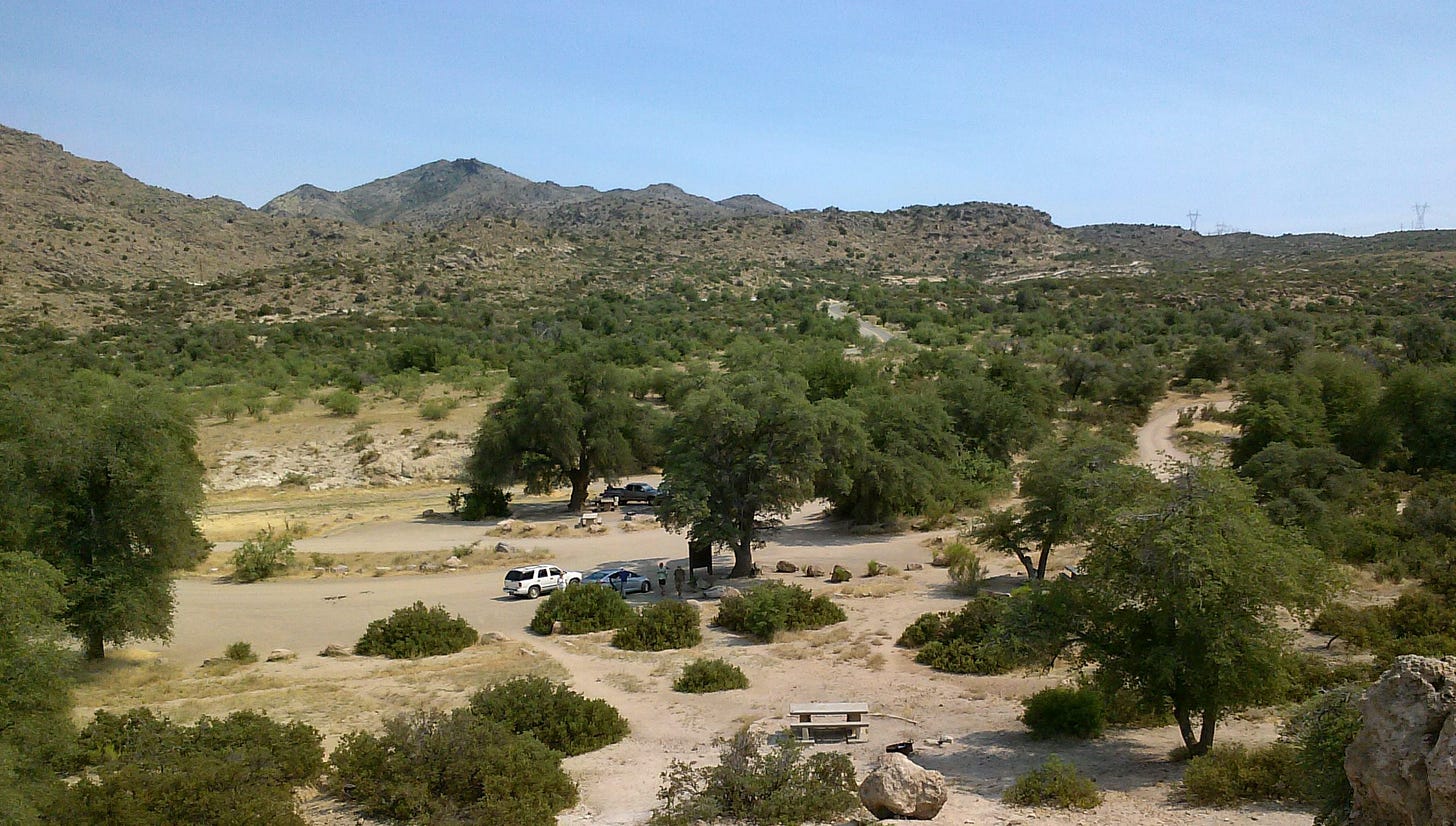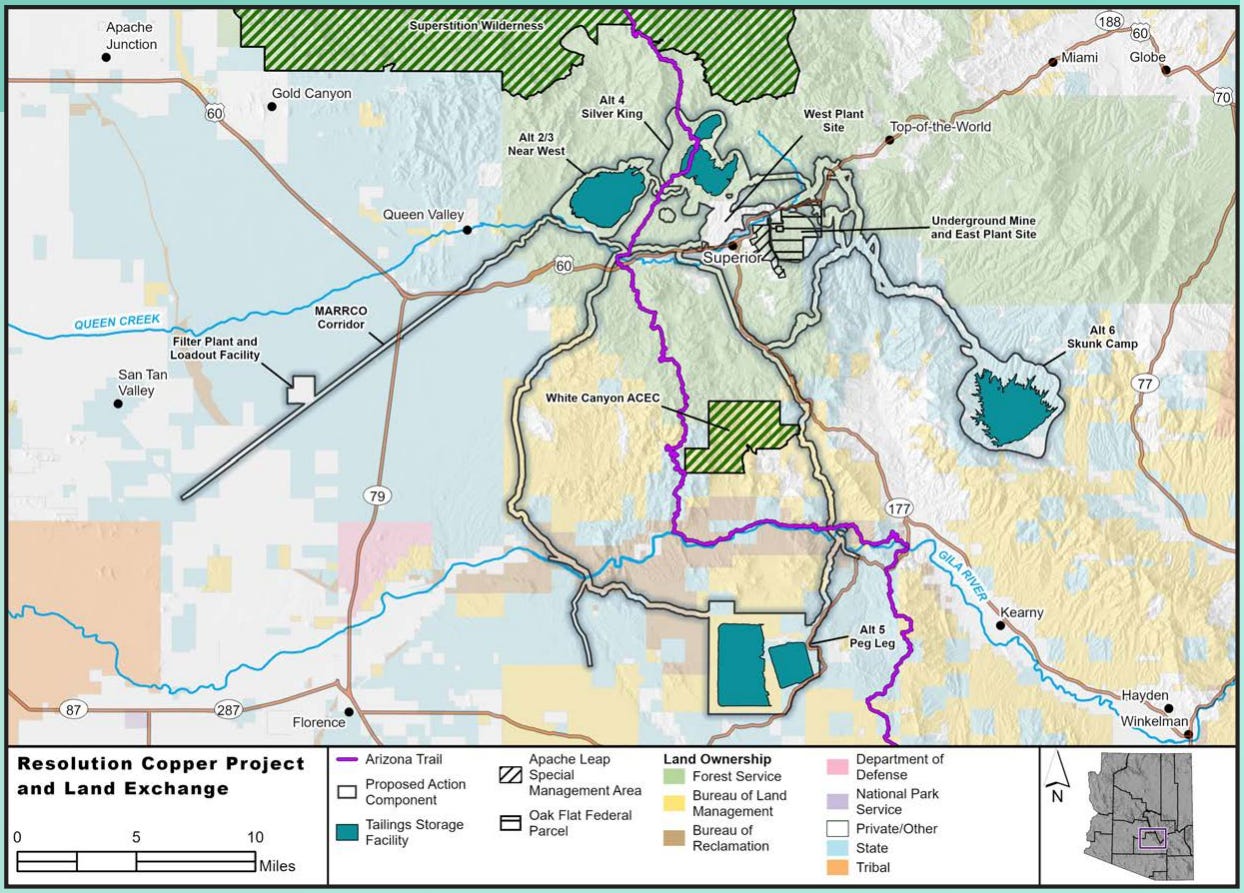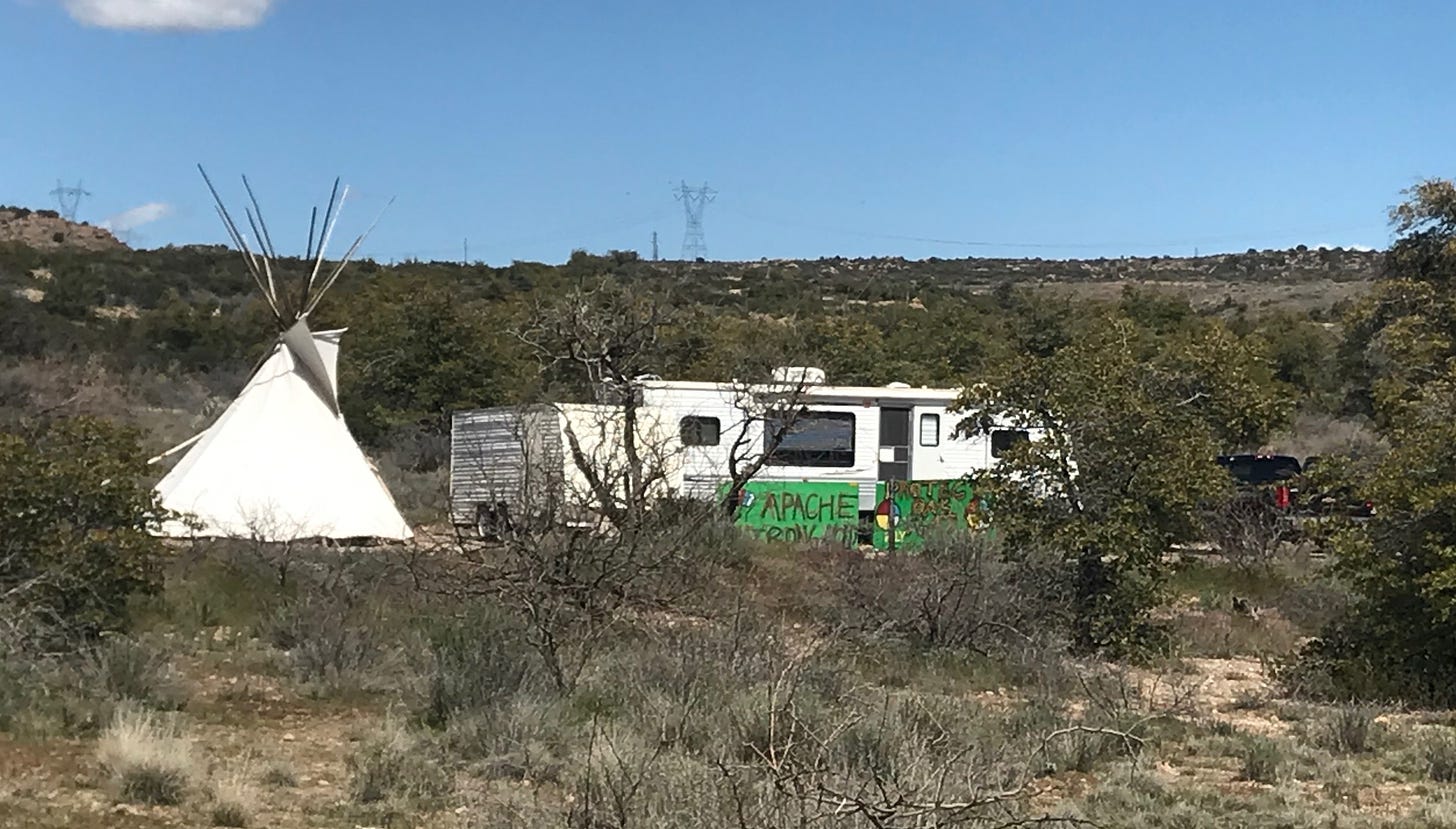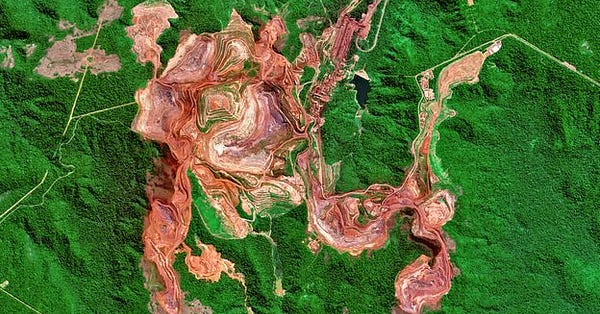With a month to stop a mine, he's occupying a sacred site
Wendsler Nosie Sr has been dealing with US antics for 36 years. To stop a mine, he went home.
Hi! I’m Ian Morse, and this is Green Rocks, a newsletter that doesn’t want dirty mining to ruin clean energy.
While we were gone last month, two major US copper projects received big news.
First, the proposed Pebble Mine in Alaska received a final, resounding blow. Officials in the outgoing administration decided the gold-copper project could not go forward without violating US law to protect clean waters. That was after widespread outcry that the project had initially received approval and also after company officials were caught on camera telling undercover investigators that the company had the US government in its pocket.
Second, that same government put an Arizona mine on the fast track to approval before a new president takes over.
The proposed Resolution Copper Mine threatens to decimate two sacred San Carlos Apache sites. Wendsler Nosie Sr, a tribal council member, has been living at one of those sites since last year.
By phone the day after Thanksgiving, he told me living there has been like going home. This is where he is staying, at Oak Flat:
Nosie used to hear his grandparents talk about going home. “I’ll take you home,” he would throw into their conversation. But as a young kid, the importance of the phrase was lost on him, and he would earn just an endearing pat on the head. “As I grew up, it really hit me what they were talking about.”
The San Carlos Apache don’t live on their ancestral grounds. They live in a reservation that began as a camp for prisoners of war, Nosie said. The same president who signed the US’s current mining law in 1872, Ulysses S Grant, also forcibly removed thousands of Native Americans from their lands. Hundreds died in the massacres leading up to the march to the reservation, and hundreds more in the march itself. Compared to the reservation, Oak Flat is like the Garden of Eden — in lush life and origin story.
I remember my grandmother taking me to these holy places sneaking me in, not being able to stay there, grabbing medicine plants, or grab an acorn as quick as we could. And I never understood the rush until I got a little bit older in my teens. These were the places where my grandfather, my great-grandfather lived and talked about how their parents were force- marched onto San Carlos, and how they all tried to return home one day.
San Carlos Apache still use Oak Flat for ceremonies and prayers, and protecting it is their religious right under the first amendment, Nosie says. Oak Flat lies outside the reservation, inside a national forest, and on the edge of the proposed Resolution Copper mine. It’s about an hour’s drive from Phoenix.
“This fight that we have here under religion, it’s really exposing what has been going on in this country for decades,” Nosie said. Typically people are only allowed to stay 14 days in Tonto National Forest, but officials never removed him. “Our identity and our characteristics and how we live intertwined with the world — these are the places that make it holy.”

Among a host of potential environmental fallouts including water contamination and heavy metal dust pollution from four waste lakes, Nosie and other San Carlos Apache are worried that the underground mining operations will destabilize and possibly collapse Oak Flat as well as Apache Leap, a site where Native Americans fell to their death fighting American soldiers. Tribal members have been joined by European-American locals who worry a nearby highway may collapse and water sources may dry up.
Resolution Copper is owned by Rio Tinto and BHP, two British-Australian firms. Rio Tinto last year blew up a 46,000-year-old sacred Aboriginal site in Australia, and in the ensuing parliamentary inquiry, hundreds other cases of threatened sacred sites came to light.
Signed by the White House
The company had begun eyeing the ore deposit in 2002, but only with the help of the late Arizona Senator John McCain did the project move forward. In a national defense bill, McCain snuck in stipulations ensuring land would be handed over to the company. President Obama signed the bill in to law in 2014.
Nosie worries that the law seems to give away land without making sure the environmental impact statement (EIS) follows US laws. A law professor told High Country News that the bill created a “bastardized version” of safeguards.
If the San Carlos Apache were to sue on those grounds, they would lose. Courts may simply side with Congress, because the law protects the land swap deal. Now, the US government predicts completing the EIS in December, rather than next year as previously scheduled. That bypasses at least one of three public comment periods. Nosie said the government “cheated.”
The Guardian reported that local officials are feeling “pressure from the highest level at the Department of Agriculture” to push the project through quickly.
“They’re exempt from federal laws. Then, within their own law that they passed, they’re cramming it down everybody, which means all the negative effects will not be heard. They’re fast-tracking everything,” Nosie said.
The Forest Service said it’s not speeding up the process. Rather, it had overestimated the time it would take to assess the EIS. A Resolution Copper spokesperson chose not to answer my questions and directed me toward a company statement. One part reads: “We will ensure Oak Flat campground remains open for as long as it is safe to do so, this is expected to be for at least the next few decades.” Still unanswered is whether they will make up the third public consultation and how the timeline change will affect the quality of the EIS.

“I needed to go home because I’m done playing these games. I’m done being incarcerated [on the reservation],” Nosie said. “I’m done with them trying to push assimilation of capitalism in a corporate world. I’m done, because that’s an illness that is brought on not just us but the American people.”
Nosie sees that two things could happen in the next month. “One is a miracle happening.” The other, presumably, is that the law will be carried out as it is written.
More on Resolution Copper and the San Carlos Apache in The Guardian, AZ Central, Huffington Post, Vice, and High Country News. This is Wendsler Nosie Sr:
Eye on Industry
A few Mexican senators are looking to nationalize the country’s reserves of lithium, bringing the production and distribution under the control of the state. The country has one project, in Sonora, planned to begin production in 2023. It hasn’t been received well.
Major commodity trader Trafigura signed a deal with the Congolese government to formalize six informal cobalt mining sites in the DRC.
Indonesia planned to meet directly with Tesla to talk about making the country a global battery hub.
A lawsuit in Ecuador seeks to prevent mining activities in a biodiverse, protected forest reserve. The case could be an important precedent for dozens of other Ecuadoran rainforest areas, and because it reinforces international treaties, it could be an important case for global forest protection.
Mercedes-Benz says they will only source cobalt from “certified” mining sites in the Democratic Republic of the Congo.
Finland is looking to capitalize on its rocks with lithium, nickel, and cobalt, but locals fear the environmental and social impact.
The US Department of Defense has awarded three rare earths projects with a total of $13 million as a baby step to building domestic rare earths capacity.
Policies that protect the environment may boost reliance on recycled materials and shrink demand on mines, says consultancy Wood Mackenzie.
Switzerland votes down a proposal to hold its companies accountable for human rights and environmental abuses abroad. The legislation would have impacted a colossal miner, Glencore.
Workers at a copper mine in Chile, the world largest producer, have rejected contract offers from their employer, paving the way for a strike.
Reads
≠ endorsement
The world needs lithium. Can Bolivia’s new president deliver it? (Grist)
Weekend read: Solar needs aluminium, but it has a carbon problem (PV Mag)
A Copper Mine vs. Sacred Apache Land: The Story in Words and Images (New York Times)
Battery life: the race to find a storage solution for a green energy future (Financial Times)
California Wants Its Imperial Valley to Be ‘Lithium Valley’ (Bloomberg)
The scarred landscapes created by humanity’s material thirst (BBC)
The women of Kendeng set their feet in cement to stop a mine in their lands. This is their story. (Mongabay)
Europe’s Tesla rival is fixing the huge battery recycling mess (Wired)
Deep Sea Rush (The Baffler)
Thanks for reading! I’m Ian Morse, and this is Green Rocks, a newsletter that doesn’t want dirty mining to ruin clean energy.
These topics are relevant to anyone who consumes energy. If you know someone like that, tell them to sign up!









